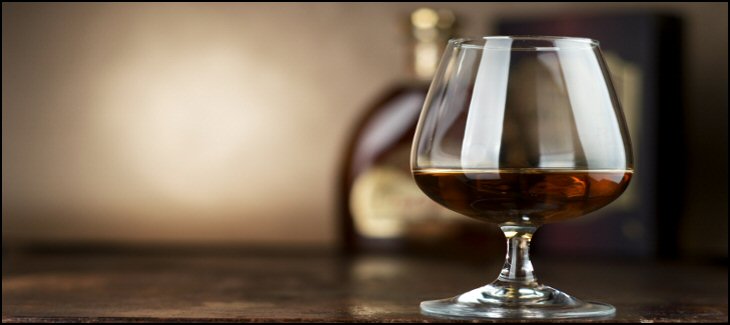Brandy
Brandy derives its name from the Dutch word brandewijn (meaning “burnt wine”) and is a spirit distilled from wine or other fermented fruit juices.
There are three main types of brandy:
- Grape Brandy is produced by the distillation of fermented grapes and aged in wooden casks. The wood colors the spirit, mellows the taste, and enhances the aromas and flavors. Grape brandy can be further broken down into the following popular styles
- Cognac comes from the Cognac region of France and has strict requirements dictating its production. At least 90% of the grapes used must be of the Colombard, Ugni Blanc, or Folle Blanc varieties and it must be distilled in a traditional method using copper pots. All cognac is aged a minimum of 2 years, with some being aged twenty years or longer.
- Armagnac is made from grapes of the Armagnac region in Gascony, France. Traditional Armagnac is distilled only once in a small continuous still and aged in oak cask from Gascony or Limousin.
- American Brandy has become more respected and popular in recent years, with the vast majority coming from the state of California. There are no regulations as to the grapes used in these brandies so the differences between brands can vary greatly.
- Pisco is a strong, colorless to amber colored brandy produced in specific regions of Chile and Peru.
- Fruit Brandies are distilled from fruits other than grapes, such as cherry, apricot, plums, and apples. Popular fruit brandies include the cherry-flavored Kirsch, the apple-flavored Calvados and the anise based Ouzo.
- Pomace Brandy (also called Marc and Grappa) is produced by fermentation and distillation of the grape skins, seeds, and stems that remain after grapes have been pressed to extract their juice for making wine and are minimally aged, if at all. They tend to be harsher in taste, although they can offer a fruity aroma of the type of grape used, a characteristic that is lost in oak-aged Brandy.
Deciphering the label:
Brandy has a traditional quality rating system, which is mainly used in Cognacs. In this system, the age of the youngest brandy in the blend is used to determine its classification.
- V.S. (“Very Special”) is aged at least 2 years in wood
- V.S.O.P (“Very Superior Old Pale”) is aged at least 4 years in wood
- Napoleon is aged a minimum of 6 years in wood
- X.O. (“Extra Old”) is also aged at least 6 years in wood, although most cognacs of this designation are much older. (In 2016, the minimum will be set at 10 years)
- Hors d’age is often too old to determine the age, and is typically used to indicate a very high quality product.


